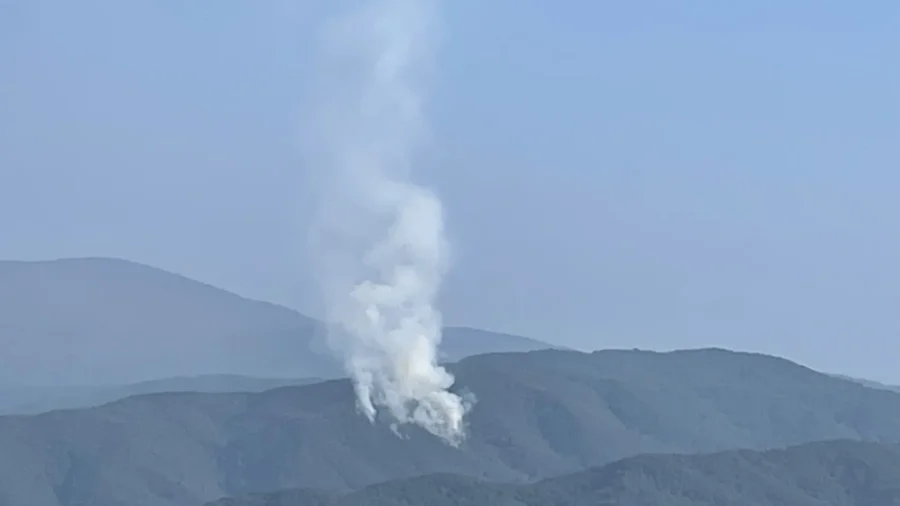A wildland fire that started inside the Great Smoky Mountains National Park on Aug. 26 was still ongoing on Aug. 30, covering 16.3 acres, according to the National Park Service (NPS).
The so-called Flint Gap Fire was burning primarily in the undergrowth of steep terrain. It is located near Hannah Mountain in Tennessee, which lies south of Abrams Creek inside the park.
“Yesterday, firefighters were able to walk the perimeter to map the fire. The fire is now estimated to be 16.3 acres due to the more accurate mapping,” said the NPS on Aug. 30, following an earlier estimate of 23 acres.
“Today, crews will continue to monitor fire activity and to identify areas in which crews can safety confine and contain the fire,” the NPS said.
The fire has led to road, trail, and campsite closures, with closures affecting backcountry campsites 14, 15, and 16. Parson Branch Road, Rabbit Creek Trail from Abrams Creek to Cades Cove, and Hannah Mountain Trail from Parson Branch Road to Little Bottom Trail were also closed.
According to park authorities, there was no threat to structures.
Officials have not yet established the cause of the fire, and investigations are underway.
The local National Guard has assisted the park service to combat the blaze.
“Yesterday, Tennessee National Guard continued to provide aviation support and dropped 38 buckets (25,000 total gallons of water) on the fire,” said the NPS on Aug. 29. “Today, a Type 3 Helicopter will assist with reconnaissance and will assess opportunities for ground crews to safely access the fire.”
The Great Smoky Mountains National Park spans North Carolina and Tennessee. It’s the most visited national park in the United States and is renowned worldwide for its diversity of plant and animal life, ancient mountains, and remnants of Southern Appalachian mountain culture.

